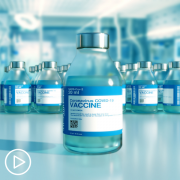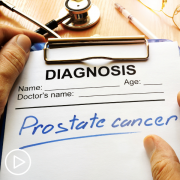What Barriers Do CLL Patients Face in Accessing Clinical Trials?
What Barriers Do CLL Patients Face in Accessing Clinical Trials? from Patient Empowerment Network on Vimeo.
When could CLL patients run into barriers to clinical trial access? CLL expert Dr. Adam Kittai explains how access can vary, explains cooperative groups, and discusses the financial benefits of some clinical trials.
Dr. Adam Kittai is a hematologist and an assistant professor at the The Ohio State University Comprehensive Cancer Center – The James. Learn more about Dr. Kittai, here.
See More from CLL Clinical Trials 201
Related Resources:

|

|

|
Transcript:
Katherine:
What do you feel are the barriers to accessing clinical trials for patients?
Dr. Kittai:
So, unfortunately, a lot of clinical trials are at academic centers, and so there are – and the reason that is, is that the academic centers have the infrastructure to run the clinical trial. So, as we have mentioned before, there’s a lot of visits with a lot of extra science and labs that are done associated with the clinical trial. And a lot of those things and the coordination can only be done at large centers that can open clinical trials and know how to run them.
Similar explanation could be that that safety monitoring committee that I’d mentioned before, where the academic centers have the infrastructure to ensure safety for the patients. So, access to academic centers is a limitation to enrolling in clinical trials. That being said, there are a lot of centers that are associated with an academic center and do have a lot of the clinical trials that are available at the academic center.
And there are also cooperative groups. These cooperative groups are called Alliance and ECOG and SWOG. And these cooperative groups are national groups that are headed by multiple academic centers in partnership with pharmaceutical companies and they typically run large Phase III medical trials that help redefine standard of care. And those particular clinical trials are often available at private practices as well.
Katherine:
Oh, that’s great. So, patients don’t necessarily have to think about traveling to a large educational institution then to become part of the clinical trial?
Dr. Kittai:
Not always. Not always. Typically for the Phase I, the answer is yes. But for Phase III trials, usually there’s a lot of access available for Phase III trials.
Katherine:
What would you say to patients who may be hesitant about participating in a trial?
Dr. Kittai:
I would say that it’s important to at least ask about what’s available. And knowing what’s available and the risks and benefits of going on a clinical trial is how you should make the determination if you should go on a clinical trial.
Remember what I said earlier that the clinical trial is really meant to help improve safety or efficacy. So, we don’t open clinical trials that we are not hoping to improve one of those two things. And so, that is something that we should be able to put in words to you when inquiring about the clinical trial. What is the goal of this trial, and why do you think it’s going to improve safety or efficacy? And the physician who’s talking the trial with you about it should be able to answer those questions for you. So, if you have some hesitance about going in clinical trials, I would say gather your information first before making a final decision.
Katherine:
Some patients worry about the financial aspect or impact of a clinical trial. Aren’t trials expensive?
Dr. Kittai:
So, actually, most clinical trials are less expensive than enrolling a standard of care. So, this is actually a benefit of going on a clinical trial. Often times, the drugs in the clinical trial are a cover. So, that’s something to ask too. And so, if somebody’s having trouble getting access to novel therapy that is looking good in a specific cancer, a clinical trial is actually a way to get access to that drug without paying for it.
Also, all clinical trials when they’re being developed are looked at by the finance committees of the hospital or wherever it’s being developed. All standard of care options are billed through the patient insurance, but all the extra stuff is usually covered by the pharmaceutical company that’s enrolling those patients onto the trial. Or I should say the supporting the clinical trial.






